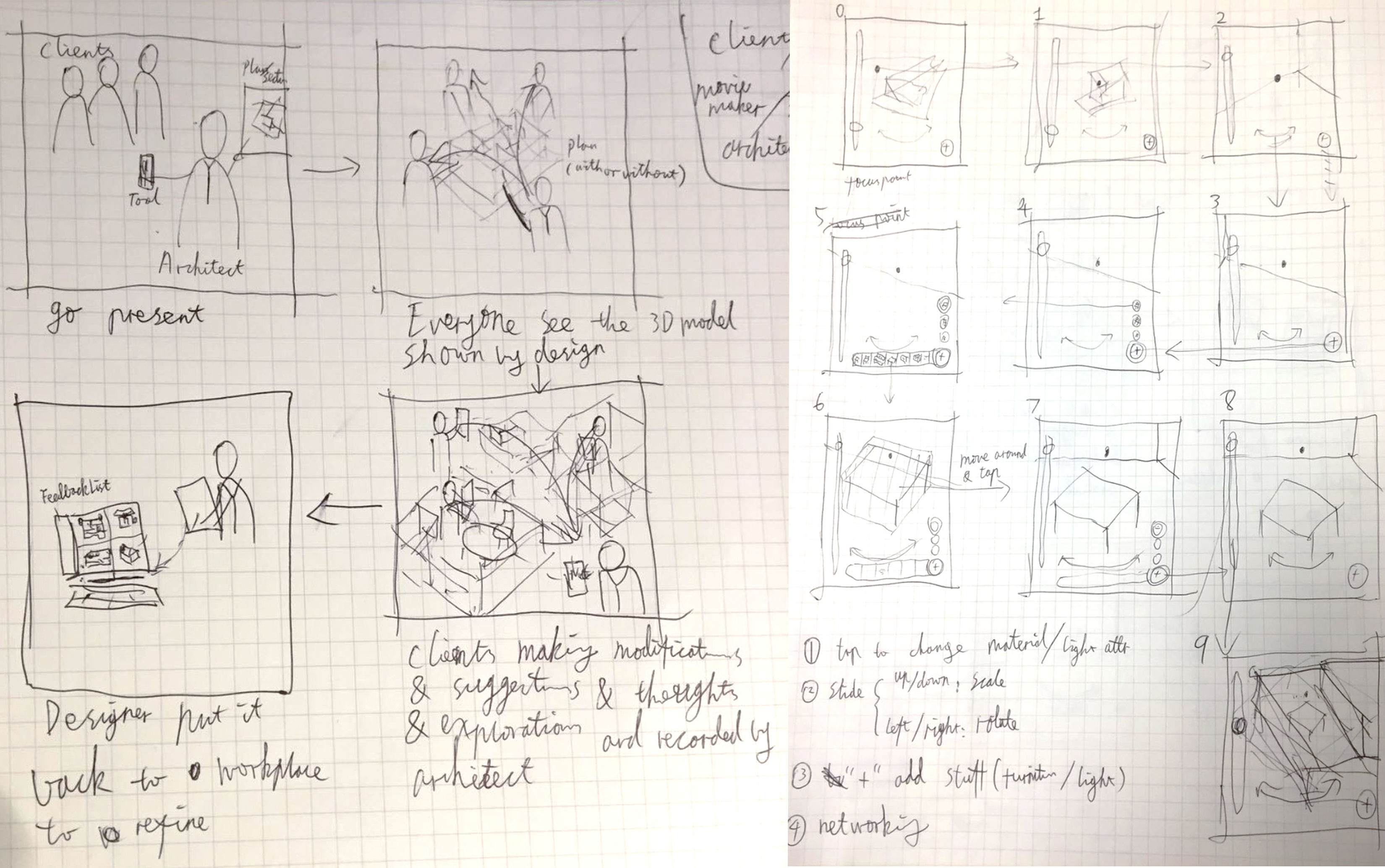MRTrial
Solve problems intuitively in AR/VR

ARchiShow
Type AR interaction design Time Mar. - Apr. 2019 AR Tool Unity
Problem & Goal
Currently in real estate field, it's more of a "what you see is what you get" situation, and clients have few agents in the design
or their future houses.
ARchiShow aims to offer the real estate industry a way to engage their clients in their house design process
in accordance with the clients' own flavors.
Ideation

Digital Prototype
INFINITY ROOM
Type VR + AR interaction design (conceptual) Time Dec. 2018
Problem & Goal
It is difficult for a global design team to collaborate on designs in real-time. It is also challenging for designers to
create AR applications for environments where it’s hard to access or imagine. It goes without saying what a challenge a
global design team would encounter when designing for AR applications.
To facilitate such a situation, we chose to create a VR application for the global AR design team to increase productivity.
Why VR?
In the VR environment, the team would be able to:
Visualize and experience user environments in first-person point-of-view
Collaborate seamlessly in real-time
Prototype quickly by the help of tools provided by the system
Physical Prototype
Reflections
Critically think about why VR/AR and the impact of the design.
Designing for a specific scenario helps streamline the ideas.
Focusing on story-telling for the presentation is critical for conveying the idea and showing the impact to the audience.
HIKING ARSSISTANT
Type AR Interaction Design Time Nov. - Dec. 2018 Traditional Tools Photoshop, Sketch AR Tools A-frame, Facebook Spark Studio, SnapChat Lens Studio
Problem & Goal
Based on the team’s discussion regarding our personal experiences, we started thinking about inconveniences that arise
while backpacking, camping, and hiking. Specifically, we discussed the problems that arise while on long hikes away from
park rangers or close proximity to help.
After discussing some ideas about having trouble finding the trail or wishing we had access to educational or safety-related
information along the path, we decided to focus on the issue of first aid situations in places where people
cannot find immediate help.
Why AR?
Hikers can not only immerse in the natural environment, but also acquire the additional information
Hikers can easily explore the trails and access necessary instruction for reacting the emergency situation
Physical Prototype
Digital Prototype
Reflections
With more Time
Make it more realistic and easier to understand
Make more interactions.
Takeaway
Think more when doing the physical prototype, so that there would be need to shift the concept and start over again.
Learned how to integrate real environment to the physical prototype and how to simulate that experience.
When having the time limit, make assumptions and simulate the scenario as possible as we can.
FIRE GO
Type VR Interaction Design Time Oct. - Sep. 2018 Traditional Tools Photoshop, Sketch VR Tools 360-camera, Proto.io
Problem & Goal
According to the United States Fire Administration (USFA), a quarter of fire victims are children. We believe children lack
the knowledge and experience to appropriately handle fire emergency situations.
Therefore, we decided to provide an immersive emergency training experience catered to elementary school children about
how to respond to fire emergencies at school.
Why VR?
Accurately depict the school environment and fire scenarios so that students could reasonably believe that they are engaging in a simulated exercise
Design the interactions to make use of whole body movements as we believe there is a strong correlation between muscle memory and emergency response
Simulate all potential scenarios based on children’s decisions so that they can learn the effects of their choice
Physical Prototype
Digital Prototype
Refelections
With more time
Make more interactions.
Try to use A-frame to create more effective prototypes.
Takeaway
Physical prototype was fast and greatly helped us to review the design and iterate.
Explore the alternative tools, try them out and find the most efficient or effective one.